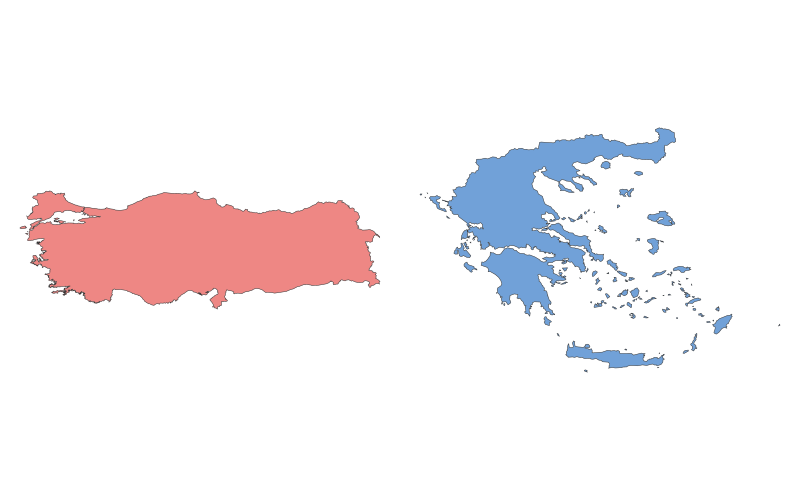Turquia vs. Grécia: Uma Comparação Geográfica

Turquia vs. Grécia: Uma Comparação Geográfica
Tabela Comparativa
| Categoria | Turquia | Grécia |
|---|---|---|
| Localização | Localizada entre a Europa e a Ásia, com costa no Mar Mediterrâneo e Egeu. | Situada no sudeste da Europa, com costa no Mar Egeu, Jônico e Mediterrâneo. |
| Tamanho | Aproximadamente 783.356 km². | Aproximadamente 131.957 km². |
| Clima | Variado: mediterrâneo no litoral, continental no interior. | Predominantemente mediterrâneo, com verões quentes e invernos amenos. |
| Recursos Naturais | Possui carvão, minério de ferro, cobre e terras aráveis. | Rico em mármore, bauxita e energia hidrelétrica. |
| Desenvolvimento Urbano | Grandes cidades como Istambul e Ancara com infraestrutura moderna. | Atenas e Salônica são centros urbanos importantes com herança histórica. |
| Transporte | Rede extensa de rodovias e ferrovias; aeroportos internacionais. | Sistema de transporte bem desenvolvido, com portos e aeroportos ativos. |
Descrição Detalhada
Turquia
A Turquia é um país transcontinental, com a maior parte de seu território na Ásia (Anatólia) e uma pequena porção na Europa (Trácia). Sua localização estratégica fez dela uma ponte entre culturas ao longo da história. Istambul, sua maior cidade, já foi capital dos impérios Romano, Bizantino e Otomano. A economia turca é diversificada, com destaque para a indústria, agricultura e turismo. Culturalmente, a Turquia é uma mistura de influências islâmicas e ocidentais, refletidas em sua arquitetura, culinária e tradições.
Grécia
A Grécia é conhecida como o berço da civilização ocidental, com uma história que remonta à Antiguidade. Suas ilhas e paisagens litorâneas são famosas mundialmente, atraindo milhões de turistas. A economia grega depende fortemente do turismo, além da navegação e agricultura. Culturalmente, a Grécia é celebrada por sua filosofia, arte e mitologia, que influenciaram o mundo inteiro. Atenas, sua capital, abriga monumentos icônicos como a Acrópole.
Ambos os países compartilham uma rica herança histórica e geografia única, mas cada um oferece experiências distintas em termos de cultura, economia e estilo de vida.